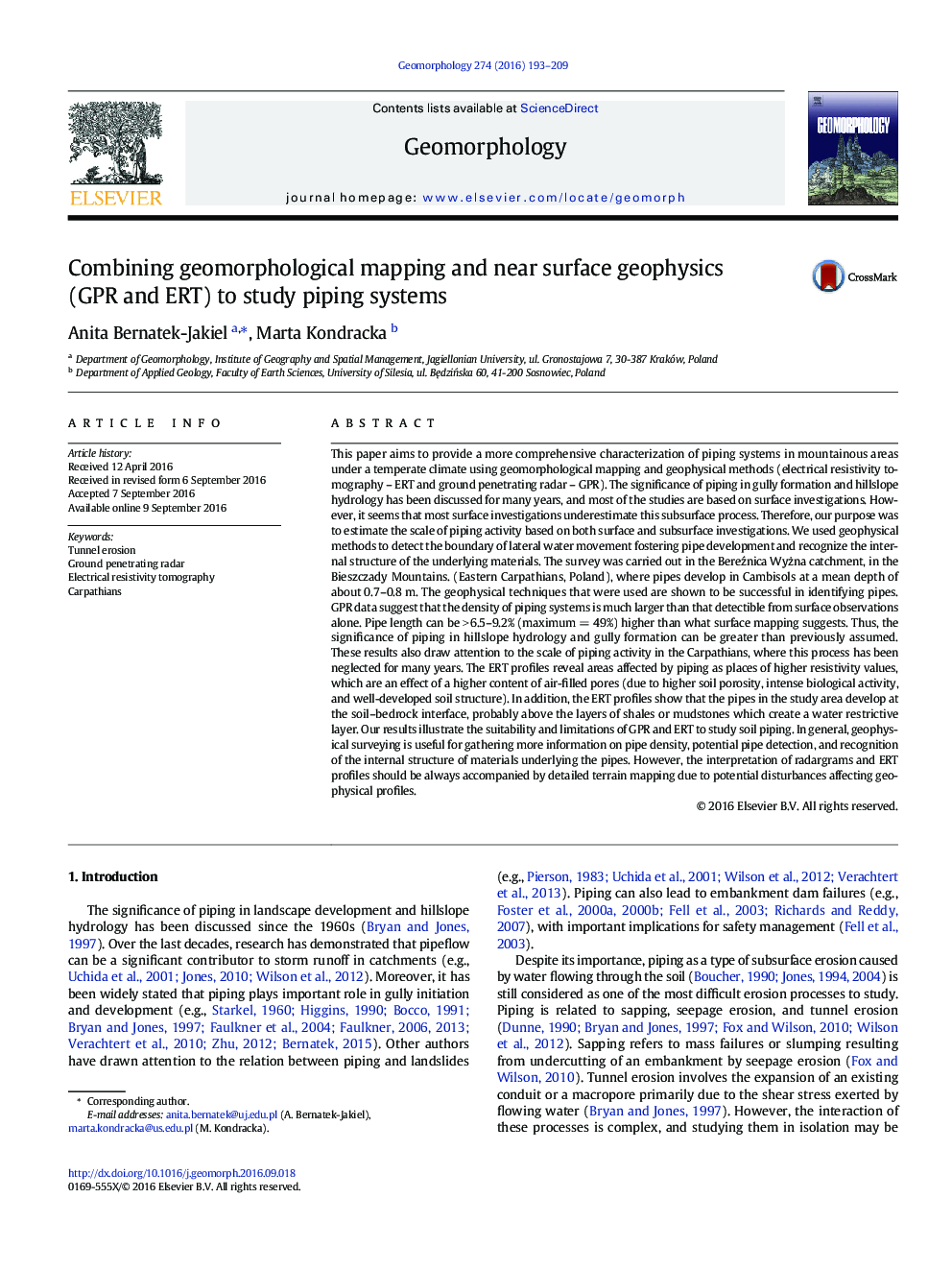| کد مقاله | کد نشریه | سال انتشار | مقاله انگلیسی | نسخه تمام متن |
|---|---|---|---|---|
| 4683919 | 1635375 | 2016 | 17 صفحه PDF | دانلود رایگان |

• Pipes in the study area develop at the soil–bedrock interface, above shales and mudstones.
• The density of pipes is much bigger than can be mapped based on surface observations alone.
• The underestimation of pipe length in the study area reaches 6.5–9.2%, max 49%.
• GPR and ERT reveal areas affected by piping.
This paper aims to provide a more comprehensive characterization of piping systems in mountainous areas under a temperate climate using geomorphological mapping and geophysical methods (electrical resistivity tomography – ERT and ground penetrating radar – GPR). The significance of piping in gully formation and hillslope hydrology has been discussed for many years, and most of the studies are based on surface investigations. However, it seems that most surface investigations underestimate this subsurface process. Therefore, our purpose was to estimate the scale of piping activity based on both surface and subsurface investigations. We used geophysical methods to detect the boundary of lateral water movement fostering pipe development and recognize the internal structure of the underlying materials. The survey was carried out in the Bereźnica Wyżna catchment, in the Bieszczady Mountains. (Eastern Carpathians, Poland), where pipes develop in Cambisols at a mean depth of about 0.7–0.8 m. The geophysical techniques that were used are shown to be successful in identifying pipes. GPR data suggest that the density of piping systems is much larger than that detectible from surface observations alone. Pipe length can be > 6.5–9.2% (maximum = 49%) higher than what surface mapping suggests. Thus, the significance of piping in hillslope hydrology and gully formation can be greater than previously assumed. These results also draw attention to the scale of piping activity in the Carpathians, where this process has been neglected for many years. The ERT profiles reveal areas affected by piping as places of higher resistivity values, which are an effect of a higher content of air-filled pores (due to higher soil porosity, intense biological activity, and well-developed soil structure). In addition, the ERT profiles show that the pipes in the study area develop at the soil–bedrock interface, probably above the layers of shales or mudstones which create a water restrictive layer. Our results illustrate the suitability and limitations of GPR and ERT to study soil piping. In general, geophysical surveying is useful for gathering more information on pipe density, potential pipe detection, and recognition of the internal structure of materials underlying the pipes. However, the interpretation of radargrams and ERT profiles should be always accompanied by detailed terrain mapping due to potential disturbances affecting geophysical profiles.
Journal: Geomorphology - Volume 274, 1 December 2016, Pages 193–209